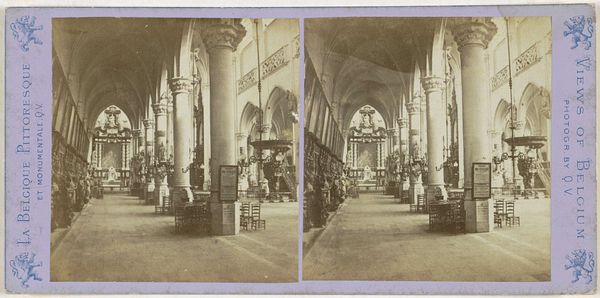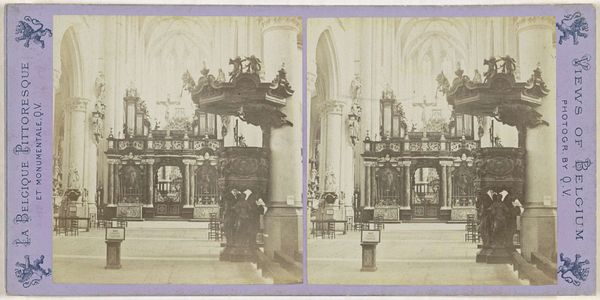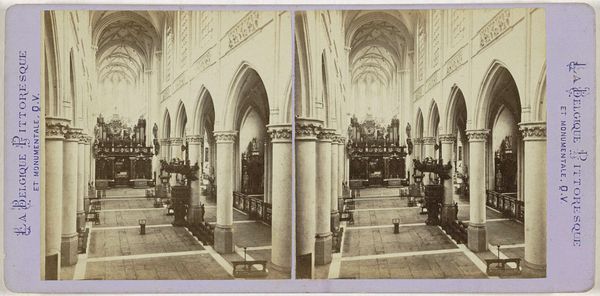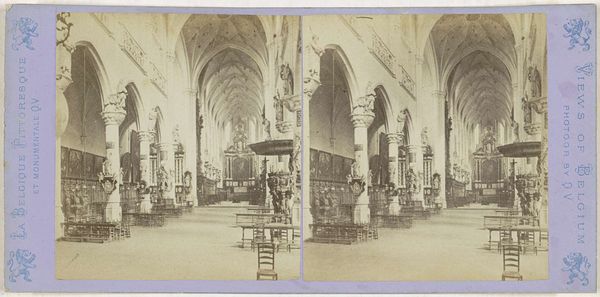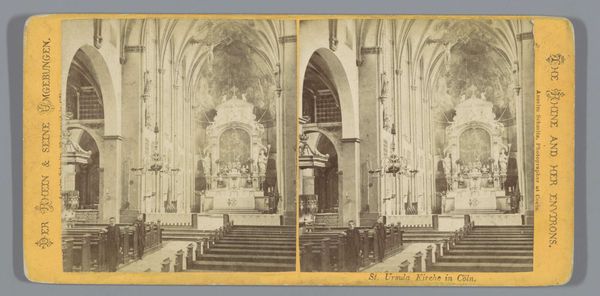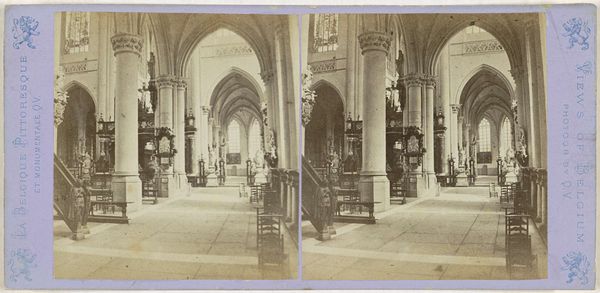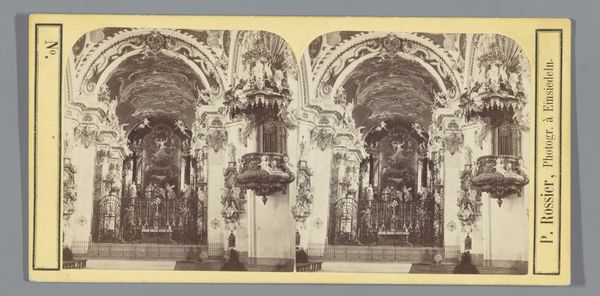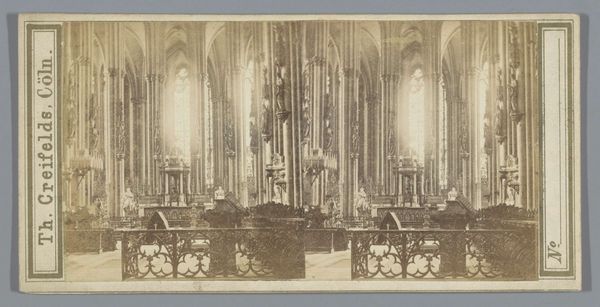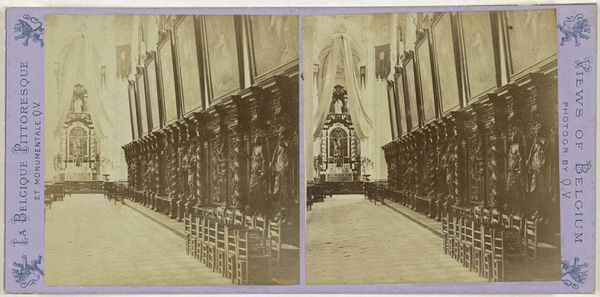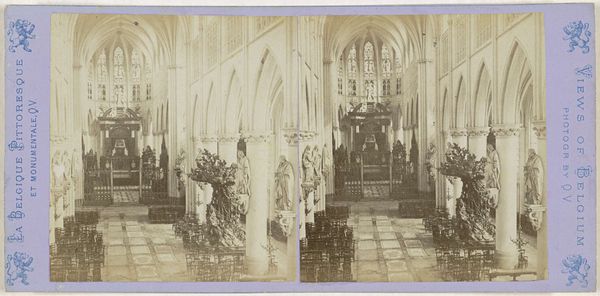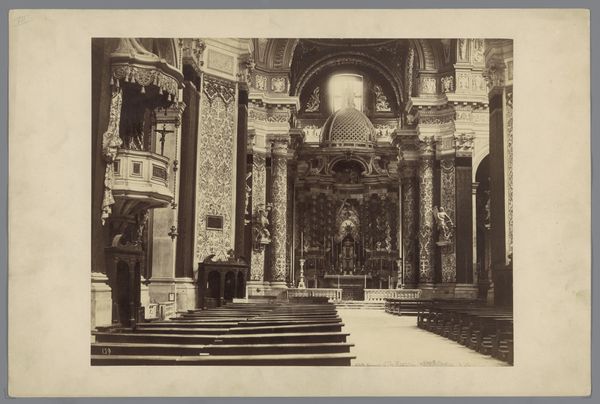
photography, gelatin-silver-print
#
byzantine-art
#
landscape
#
etching
#
photography
#
geometric
#
gelatin-silver-print
Dimensions: height 75 mm, width 150 mm
Copyright: Rijks Museum: Open Domain
Editor: This is a photograph titled "Interior of the Saint James' Church in Antwerp" by Jules Hippolyte Quéval, taken sometime between 1866 and 1870. The gelatin-silver print gives the church a sort of ghostly grandeur. How do you read this image? Curator: What I see is a powerful record of not just architectural space, but also a testament to 19th-century values. Consider the role the Church played in constructing societal norms. Look at the careful composition and how it uses geometry to impose order. This image subtly reinforces hierarchies, doesn't it? Do you see how the artist directs our gaze? Editor: Yes, there's definitely a sense of planned perspective, making it difficult not to be pulled toward the center. I guess the photographer also controls how we view religion itself, in some way? Curator: Precisely. And remember, photography at this time was a tool predominantly used and controlled by the privileged. Who gets represented, and how, becomes a political statement. It's crucial to ask ourselves: whose stories are amplified within these sacred walls and whose are silenced or erased? How does this photographic representation of the Church solidify certain cultural narratives? Editor: So it's not just a pretty picture of a church interior, but a reflection of social power dynamics? Curator: Absolutely. We need to consider it alongside other visual and textual records to understand its role in shaping public perception of faith, authority, and even national identity during that period. Editor: This makes me want to research more about the intersection of religion and photography in the 19th century. Curator: Exactly! Questioning the assumed neutrality of images allows us to uncover hidden agendas.
Comments
No comments
Be the first to comment and join the conversation on the ultimate creative platform.
